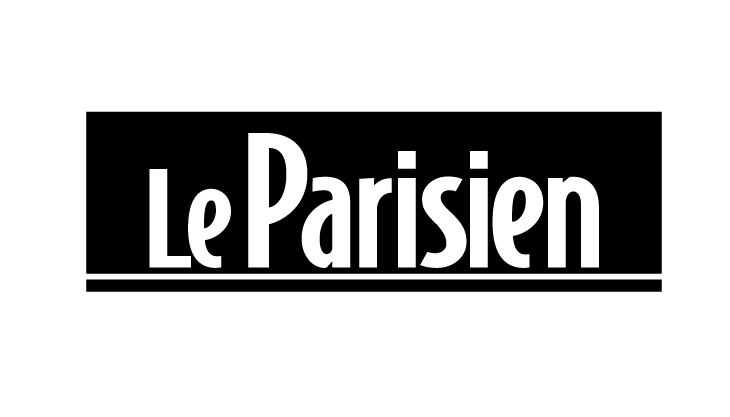Japanese Ukiyo-e art prints & posters

Japanese artprints and canvas prints
Japanese printmaking, a delicate and evocative art form, has captivated the world for centuries with its finesse. Originating in Japan during the Edo period, Japanese prints are part of the ukiyo-e movement, or ‘pictures of the floating world’. They gracefully depict scenes from everyday life, kabuki actors, geishas, landscapes such as the famous views of Mount Fuji, and representations of nature, particularly flowers and snow scenes. Each print is the result of the work of the artist and the publisher, using the woodblock printing technique to print the vibrantly coloured works, known as nishiki-e (brocade prints). Japanese prints had a significant impact on Western art and inspired many Impressionist artists in the 19th century.
Enhance your interior with the elegance of a Japanese print thanks to Muzeo's reproductions, each Japanese art print being carefully designed and framed. Each print is available in several sizes, allowing for an attractive unit price. Choosing a Japanese print for your decor is like inviting Japanese art into your home. Whether it's a work by Katsushika Hokusai, Utagawa Hiroshige, Kitagawa Utamaro, Kunisada (Utagawa Toyokuni III), Hasui Kawase or Kuniyoshi Utagawa, a Japanese print reproduction will bring a touch of exoticism to your walls. These prints are sold individually and delivered to you ready to hang, so you can start enjoying them straight away.
The fascinating world of Japanese prints: timeless art for your home
Japanese prints, known as ukiyo-e, literally ‘pictures of the floating world’, are an art form that flourished in Japan between the 17th and 19th centuries, during the Edo period. This Japanese art, produced by printing from woodblock engravings, is distinguished by its precise lines, vibrant colours and diverse subjects.
Initially produced in black and white, prints evolved into polychrome nishiki-e (brocade prints) from the mid-18th century onwards, allowing for even greater visual richness. Each Japanese print is the result of a collaborative process: the artist draws the design, an engraver carves it onto wooden blocks (each colour requiring a different block), and a printer applies the colours and presses the paper.
These prints were immensely popular, affecting all of Japanese society in the 18th and 19th centuries, and their influence spread throughout the world, particularly in Europe, where they fascinated many artists. The relatively low price of these works made them accessible to everyone, unlike traditional paintings.
Undisputed masters of Japanese printmaking
Several artists have left their mark on the history of Japanese printmaking. Katsushika Hokusai, one of the most famous for his series Thirty-six Views of Mount Fuji, including the iconic work of Japanese art The Great Wave off Kanagawa, has become inseparable from Japanese prints and Japanese art.
Utagawa Hiroshige is renowned for his poetic landscapes, with his series The Fifty-three Stations of the Tōkaidō, his depictions of snow, rain and travel scenes offering a unique atmosphere.
Kitagawa Utamaro specialised in woodblock prints of female beauties, delicately capturing the elegance of Edo geishas.
Finally, other major artists such as Kunisada (Utagawa Toyokuni III) and Kuniyoshi Utagawa excelled in portraits of kabuki actors and battle scenes.
The sale of these prints at low prices flourished, and these artists produced a phenomenal quantity of woodblock prints, offering prints in beautiful frames.
Some timeless works of Japanese printmaking
The Japanese art of 19th-century printmaking offers a striking picture of Japan with its nishiki-e woodblock prints. The artist Hokusai created views of Mount Fuji such as The Great Wave (1831) and Red Fuji (1831), as well as nishiki-e of Flowers and Birds (1834).
Hiroshige, a leading Japanese print artist, created Plum Blossoms at Kameido (1857), Sudden Rain on Shin-Ōhashi Bridge and Atake (1857), as well as his Great Flowers series (1845), a true representation of what Japanese art had to offer at the time.
Utagawa Kunisada and Utagawa Kuniyoshi enriched Japanese art with their unique styles. Utagawa Kuniyoshi, famous for his portraits of actors such as Kabuki Scene with Actor Ichikawa Danjūrō VIII (1850), also gave us Takiyasha the Witch and the Skeleton Ghost (1844) and various scenes of fish. Later, Hasui Kawase, with his new style of woodblock printing (shin-hanga), produced works such as Snow at Zojoji Temple (1925) and Moonlight in Magome (1930).
These Japanese prints, along with nishiki-e, popular posters in Japan, are so well known that they have become a true export of Japanese art around the world. Katsushika Hokusai, Utagawa Hiroshige, Kitagawa Utamaro, Kunisada (Utagawa Toyokuni III) and Kuniyoshi Utagawa defined Japanese art with their woodblock prints. The nishiki-e of the 19th century remain the pinnacle of this Japanese art form and are key examples of the development of this style, the Japanese art of Katsushika Hokusai, Utagawa Hiroshige, Kitagawa Utamaro, Kunisada (Utagawa Toyokuni III) and Kuniyoshi Utagawa, making these Japanese prints a living picture of that era.
Symbolism and recurring themes in Japanese print art
Japanese prints from the ukiyo-e period often feature symbols specific to Japan. The subjects of Japanese prints are varied: landscape views such as Mount Fuji symbolise eternal beauty, while scenes of everyday life in Edo offer a glimpse into the customs and leisure activities of the 19th century.
Kabuki theatre is a major source of inspiration, with artists creating posters and portraits of actors in their most famous roles. Flowers and animals are also popular, adding poetic meaning. Even a simple snow scene can evoke purity or melancholy.
These works are much more than images; they are a window into the Japanese soul, a narrative art form that celebrates beauty and explores emotions. Each print is designed to evoke a feeling.
From the 19th century to the present day: the living legacy of Japanese prints and the shin-hanga movement
Japanese prints had a considerable influence on Western art from the second half of the 19th century onwards. Artists such as Van Gogh, Monet, Degas and Toulouse-Lautrec were deeply influenced by the compositions, flat colours and themes of ukiyo-e. In Japan itself, although ukiyo-e declined with the modernisation of the country, it experienced a renaissance in the early 20th century with the Shin-Hanga (new prints) movement. Artists such as Hasui Kawase continued the tradition of landscapes and genre scenes, incorporating a modern sensibility and more refined printing techniques.
These Shin-Hanga prints capture the beauty of Japan with effects of light and atmosphere, as in snow scenes and twilight landscapes. Japanese prints remain a source of inspiration for artists around the world, and these works continue to be prized by art lovers, with Japanese woodblock printing remaining a craft of excellence. The usual price for an original Japanese print by a master artist can be high, but high-quality reproductions such as those offered by Muzeo provide an affordable alternative.
Japanese prints: a touch of refinement for your wall decoration
Incorporating a Japanese print into your wall decoration is an elegant way to bring an artistic dimension to your interior. Whether it's a reproduction of a work by Katsushika Hokusai, Utagawa Hiroshige, Kitagawa Utamaro, Kunisada (Utagawa Toyokuni III) or Kuniyoshi Utagawa, or by a Shin-Hanga artist such as Hasui Kawase, these prints have a unique power. A kabuki painting can energise a living room, while a view of Mount Fuji or a flower arrangement can create an atmosphere of serenity. The subtle colours and harmonious compositions of Japanese prints suit both classic and contemporary styles. Each print invites contemplation, and choosing a Japanese print means choosing an art form that continues to fascinate with its beauty and depth. The quality of the print is therefore crucial in order to do justice to the original.
Choose your original Japanese print or reproduction at Muzeo
To select the Japanese print that will enhance your space, Muzeo offers a vast collection of works by major artists of ukiyo-e and Shin-Hanga. Each Japanese print available is faithfully reproduced, respecting the colours and details of the original woodblock print. Choose the format and type of frame that best suits your interior, with the unit price of our reproductions making this Japanese art accessible.
A new work can transform a room, and whether you are drawn to Hokusai's landscapes, Hiroshige's scenes, or Utamaro's portraits, you are sure to find the perfect print. Online sales simplify the purchasing process for individuals, and our delivery service ensures that your painting arrives in perfect condition. Choosing a Japanese print from Muzeo means choosing exceptional wall art, an engraving that reflects the richness of Japanese culture and the talent of its artists. Available at all price points, Japanese prints from Muzeo reflect the quality of the materials and our expertise.




















































